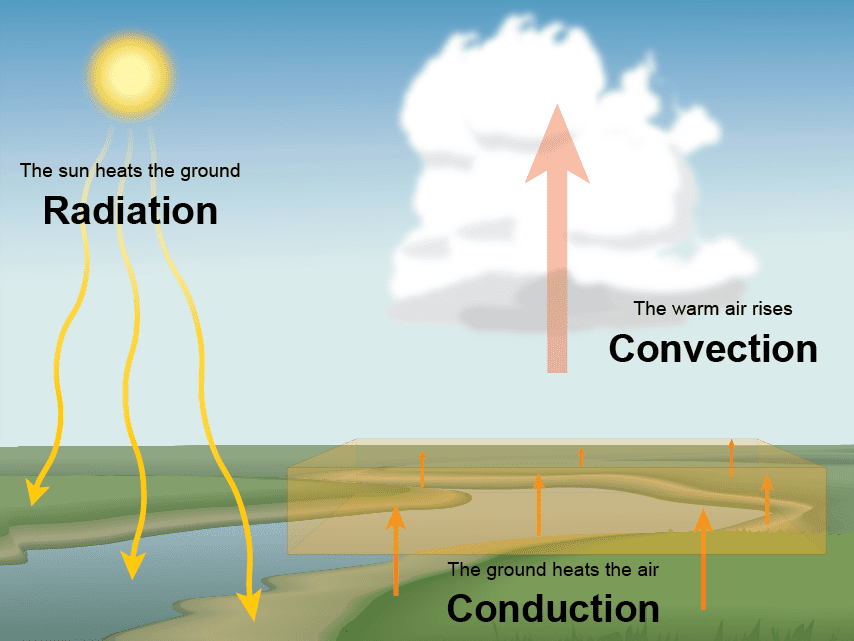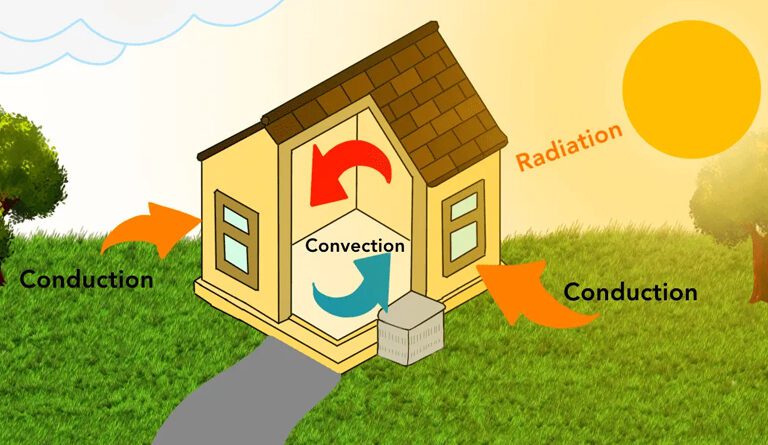Discovering Heat: How Temperature Moves and Matters
Heat Lesson Plan for Class 7
Hook
Have you ever touched a metal spoon left in a hot cup of tea? Why did it feel hotter than the plastic handle? What’s really happening when things feel hot or cold?
Learning Objectives
By the end of this lesson, you will be able to:
-
Understand what temperature and heat mean.
-
Explain how heat travels through different materials.
-
Learn how thermometers work.
-
Identify the three methods of heat transfer: conduction, convection, and radiation.
Curiosity Questions
- Why do we feel cooler when we stand in front of a fan, even though fans don’t make cold air?
-
Why do metal benches feel hotter than wooden ones on sunny days?
-
How does your body know whether something is hot or cold?
Topic Introduction
Heat is a form of energy. It moves from one object to another and affects how things feel, change, or behave. Temperature tells us how hot or cold something is, and heat tells us how much energy is being transferred.
Analogies:
-
Think of heat like water in a bucket. The fuller the bucket (more heat), the more water (energy) it can pour into another container (object).
-
Imagine a game of “pass the parcel.” The parcel (heat) passes from one person to another. That’s how heat travels between objects.
Core Concept Explanation
-
Temperature is measured in degrees Celsius or Fahrenheit and reflects how hot or cold something is.
-
Heat always flows from a hotter object to a cooler one.
Heat travels in three ways:
- Conduction: Through solids, like a spoon in hot tea.
- Convection: Through liquids and gases, like hot air rising in a room.
- Radiation: Through empty space, like sunlight warming your skin.
-
Thermometers measure temperature. Clinical thermometers are used for body temperature, and laboratory thermometers are used in experiments.

Scale or Context
Even something as tiny as a grain of sand holds heat. A giant object like the Sun emits massive amounts of heat through radiation. Understanding heat helps us build safe homes, create better clothing, and cook food efficiently.
DIY Hands-on Activity
Overview: Observe how heat travels through different materials.
Materials Needed: 1 metal spoon, 1 plastic spoon, warm water, two cups
Safety Precautions: Use warm, not hot water to avoid burns.
Instructions
-
Fill both cups with warm water.
-
Place one metal spoon in one cup, and a plastic spoon in the other.
-
Wait 2 minutes, then touch the handles of both spoons.
-
Observe which one feels warmer.
Observation/Exploration Task
Why did the metal spoon feel warmer? What does that tell us about metal and plastic?
Elaboration
Heat Transfer Role-Play
Assign roles heat, metal, plastic, air, and water. Act out how heat transfers differently through each medium. This fun group activity deepens understanding through movement and storytelling.
Explanation & Recap
Heat moves from hot to cold. Conduction works through solids, convection through liquids and gases, and radiation through space. Temperature is what we measure; heat is what we feel or transfer.
Real-life Applications
-
Cooking: Heat helps cook food through conduction and convection.
-
Space heaters and blankets use radiation to keep us warm in winter.
Quick Quiz
-
Which method of heat transfer works through solids?
-
What is the device used to measure temperature?
-
What direction does heat flow in?
Think-Pair-Share
Share with a partner: What would happen if the Sun stopped radiating heat? Discuss how that would affect Earth.
Main Recap
-
Heat is energy.
-
Temperature is a measure of hotness.
-
Heat transfers via conduction, convection, and radiation.
-
Thermometers help us measure temperature.
Creative Challenge
Design a simple home insulation plan to keep a room cool in summer and warm in winter using your knowledge of heat transfer.
More to Explore
-
Research how thermal flasks keep liquids hot or cold.
-
Explore why animals like camels have thick fur in the desert.
Student Self-Evaluation
-
I can explain the difference between heat and temperature.
-
I can name three methods of heat transfer.
-
I can describe how a thermometer works.
Reflection
What was the most surprising thing you learned today about heat? How will you use this knowledge in your daily life?
Digital Learning Enhancements
-
YouTube Animation Link: Heat Transfer
-
Interactive Simulation Link: Energy Forms & Changes

